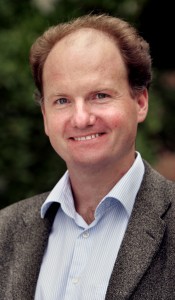Fabian Wagner is a researcher in IIASA’s Mitigation of Air Pollution and Greenhouse Gases (MAG) Program. He is currently on sabbatical as a visiting professor at Princeton University.

Fabian Wagner
Credit: Princeton University
What’s your role at Princeton?
I have a joint appointment with two institutions within the university, and one of my roles is to improve the communication between these: I am a visiting professor at the relatively young Andlinger Center for Energy and the Environment (ACEE), and a visiting lecturer at the Woodrow Wilson School of Public and International Affairs (WWS). The ACEE is part of the engineering school, so there I mostly interact with engineers, while the WWS mostly hosts economics, lawyers, and political scientists. At WWS I am part of the Science, Technology and Environmental Policy (STEP) Program.
What’s a typical day for you at Princeton?
Over the year I am teaching a fair amount, more than the average Princeton faculty. That is, I am not doing a sabbatical in the usual sense of the word. I am basically constantly preparing lectures for courses I am teaching on energy technologies, the energy and water nexus, and energy policy. I am also supervising undergraduate and graduate students on their theses. During the semester there are more seminars, brown bag lunches and breakfasts than one can realistically attend.
How does your work at the university differ from your work at IIASA?
Here the projects I am involved in do not have strict deadlines: The next deadline is always the next lecture. The exceptions are the days by which grades need to be submitted. As a professor I advise students, but they go away and do their research themselves. It is fascinating to see how smart they are and how quickly they absorb ideas and can apply them. Oh, and I have no supervisor who guides what I do.
What do you miss about IIASA?
I miss the team spirit of the MAG group, and the more international outlook on issues. What I do not miss is the long commute from Vienna to Laxenburg—here I live on campus and can walk to either one of my offices in three minutes.
What are you doing at a university that you would not normally do at IIASA?
I attend a lot more seminars, and in general – because the work here is less funding-driven – there is a great deal of room for intellectual curiosity. I also work with corporate partners of the university. While at Princeton, I’m working with a local energy utility on a project to model the future electricity system and electricity market in New Jersey and neighboring states to support the further development of their Energy Master Plan.
Here I have a lot of freedom in deciding what projects to engage in and how to spend my time. In my experience Princeton is very open to cross-cutting activities. IIASA is small, so the number of approaches, methods and modes of thinking are limited. On the other hand, much of the work at Princeton is not so holistic and integrated as IIASA’s work, and some activities here lack a critical mass and long-term engagement.
When you come back to IIASA, what would you want to bring with you from your experience at Princeton?
The courses that I teach here are more on the turf of IIASA’s energy and water programs, so I hope to be able to interact with them more in the future. Also, in addition to the specific things I am learning I also hope to bring back some inspiration to IIASA colleagues to think about the value of changing perspectives from time to time, and about the space of possible career moves.
Note: This article gives the views of the interviewee, and not the position of the Nexus blog, nor of the International Institute for Applied Systems Analysis.


You must be logged in to post a comment.